William Christmas
A Unified Tensor-based Active Appearance Face Model
Jun 13, 2017



Abstract:Appearance variations result in many difficulties in face image analysis. To deal with this challenge, we present a Unified Tensor-based Active Appearance Model (UT-AAM) for jointly modelling the geometry and texture information of 2D faces. For each type of face information, namely shape and texture, we construct a unified tensor model capturing all relevant appearance variations. This contrasts with the variation-specific models of the classical tensor AAM. To achieve the unification across pose variations, a strategy for dealing with self-occluded faces is proposed to obtain consistent shape and texture representations of pose-varied faces. In addition, our UT-AAM is capable of constructing the model from an incomplete training dataset, using tensor completion methods. Last, we use an effective cascaded-regression-based method for UT-AAM fitting. With these advancements, the utility of UT-AAM in practice is considerably enhanced. As an example, we demonstrate the improvements in training facial landmark detectors through the use of UT-AAM to synthesise a large number of virtual samples. Experimental results obtained using the Multi-PIE and 300-W face datasets demonstrate the merits of the proposed approach.
Dynamic Attention-controlled Cascaded Shape Regression Exploiting Training Data Augmentation and Fuzzy-set Sample Weighting
Apr 04, 2017



Abstract:We present a new Cascaded Shape Regression (CSR) architecture, namely Dynamic Attention-Controlled CSR (DAC-CSR), for robust facial landmark detection on unconstrained faces. Our DAC-CSR divides facial landmark detection into three cascaded sub-tasks: face bounding box refinement, general CSR and attention-controlled CSR. The first two stages refine initial face bounding boxes and output intermediate facial landmarks. Then, an online dynamic model selection method is used to choose appropriate domain-specific CSRs for further landmark refinement. The key innovation of our DAC-CSR is the fault-tolerant mechanism, using fuzzy set sample weighting for attention-controlled domain-specific model training. Moreover, we advocate data augmentation with a simple but effective 2D profile face generator, and context-aware feature extraction for better facial feature representation. Experimental results obtained on challenging datasets demonstrate the merits of our DAC-CSR over the state-of-the-art.
Dictionary Integration using 3D Morphable Face Models for Pose-invariant Collaborative-representation-based Classification
Nov 25, 2016



Abstract:The paper presents a dictionary integration algorithm using 3D morphable face models (3DMM) for pose-invariant collaborative-representation-based face classification. To this end, we first fit a 3DMM to the 2D face images of a dictionary to reconstruct the 3D shape and texture of each image. The 3D faces are used to render a number of virtual 2D face images with arbitrary pose variations to augment the training data, by merging the original and rendered virtual samples to create an extended dictionary. Second, to reduce the information redundancy of the extended dictionary and improve the sparsity of reconstruction coefficient vectors using collaborative-representation-based classification (CRC), we exploit an on-line elimination scheme to optimise the extended dictionary by identifying the most representative training samples for a given query. The final goal is to perform pose-invariant face classification using the proposed dictionary integration method and the on-line pruning strategy under the CRC framework. Experimental results obtained for a set of well-known face datasets demonstrate the merits of the proposed method, especially its robustness to pose variations.
3D Face Tracking and Texture Fusion in the Wild
May 22, 2016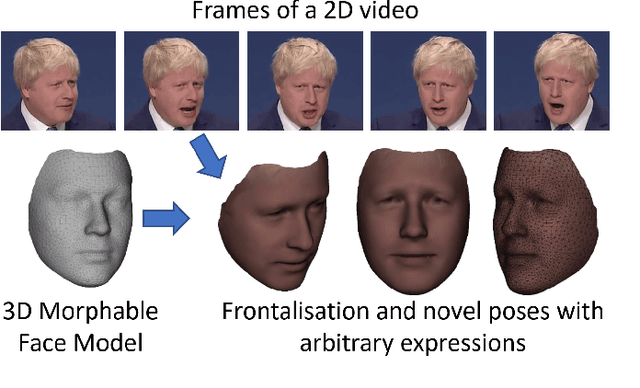
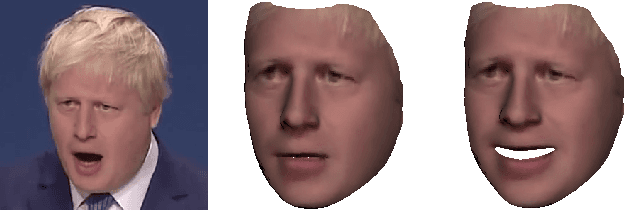
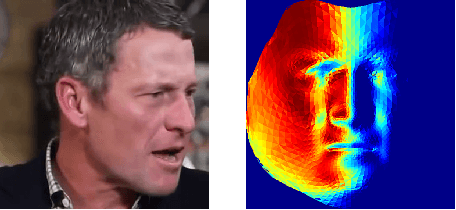
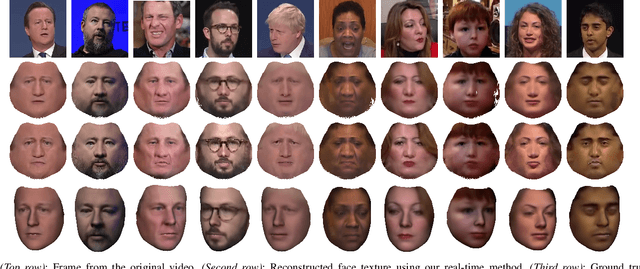
Abstract:We present a fully automatic approach to real-time 3D face reconstruction from monocular in-the-wild videos. With the use of a cascaded-regressor based face tracking and a 3D Morphable Face Model shape fitting, we obtain a semi-dense 3D face shape. We further use the texture information from multiple frames to build a holistic 3D face representation from the video frames. Our system is able to capture facial expressions and does not require any person-specific training. We demonstrate the robustness of our approach on the challenging 300 Videos in the Wild (300-VW) dataset. Our real-time fitting framework is available as an open source library at http://4dface.org.
When Face Recognition Meets with Deep Learning: an Evaluation of Convolutional Neural Networks for Face Recognition
Apr 09, 2015
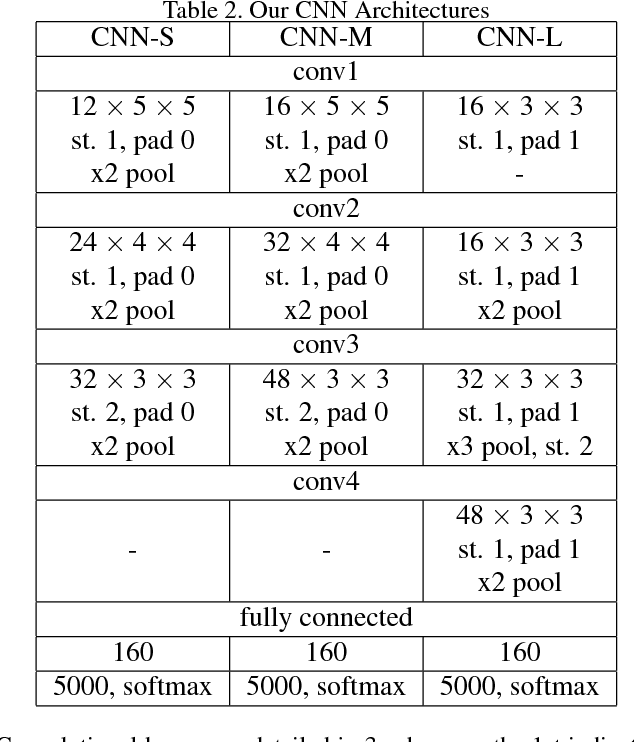


Abstract:Deep learning, in particular Convolutional Neural Network (CNN), has achieved promising results in face recognition recently. However, it remains an open question: why CNNs work well and how to design a 'good' architecture. The existing works tend to focus on reporting CNN architectures that work well for face recognition rather than investigate the reason. In this work, we conduct an extensive evaluation of CNN-based face recognition systems (CNN-FRS) on a common ground to make our work easily reproducible. Specifically, we use public database LFW (Labeled Faces in the Wild) to train CNNs, unlike most existing CNNs trained on private databases. We propose three CNN architectures which are the first reported architectures trained using LFW data. This paper quantitatively compares the architectures of CNNs and evaluate the effect of different implementation choices. We identify several useful properties of CNN-FRS. For instance, the dimensionality of the learned features can be significantly reduced without adverse effect on face recognition accuracy. In addition, traditional metric learning method exploiting CNN-learned features is evaluated. Experiments show two crucial factors to good CNN-FRS performance are the fusion of multiple CNNs and metric learning. To make our work reproducible, source code and models will be made publicly available.
Fitting 3D Morphable Models using Local Features
Mar 08, 2015
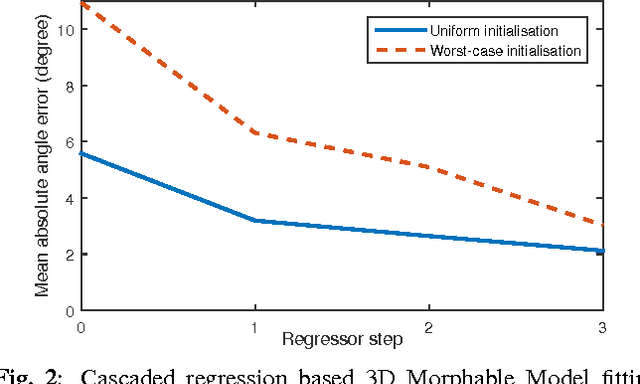
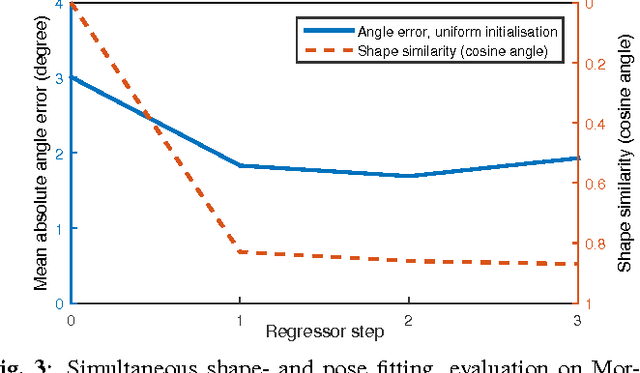
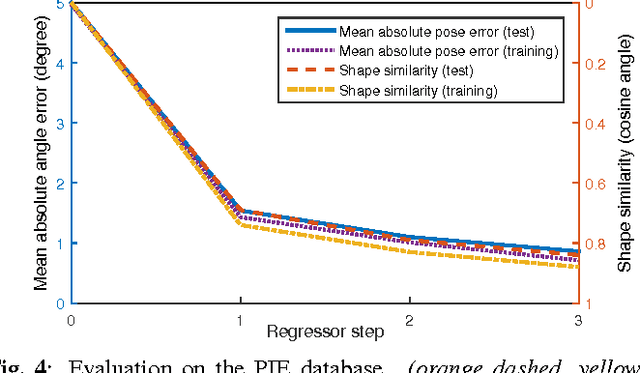
Abstract:In this paper, we propose a novel fitting method that uses local image features to fit a 3D Morphable Model to 2D images. To overcome the obstacle of optimising a cost function that contains a non-differentiable feature extraction operator, we use a learning-based cascaded regression method that learns the gradient direction from data. The method allows to simultaneously solve for shape and pose parameters. Our method is thoroughly evaluated on Morphable Model generated data and first results on real data are presented. Compared to traditional fitting methods, which use simple raw features like pixel colour or edge maps, local features have been shown to be much more robust against variations in imaging conditions. Our approach is unique in that we are the first to use local features to fit a Morphable Model. Because of the speed of our method, it is applicable for realtime applications. Our cascaded regression framework is available as an open source library (https://github.com/patrikhuber).
* Submitted to ICIP 2015; 4 pages, 4 figures
 Add to Chrome
Add to Chrome Add to Firefox
Add to Firefox Add to Edge
Add to Edge